The Rockefeller Foundation is a pioneering philanthropy built on collaborative partnerships at the frontiers of science, technology, and innovation that enable individuals, families, and communities to flourish. We make big bets to promote the well-being of humanity. Today, we are focused on advancing human opportunity and reversing the climate crisis by transforming systems in food, health, energy, and finance. For more information, sign up for our newsletter at rockefellerfoundation.org and follow us on X @RockefellerFdn.
Founder of the African Leadership Group and Founder and CEO of Sand Technologies

Fred Swaniker is the Founder & CEO of Sand Technologies, a global technology company that builds enterprise-grade artificial intelligence applications for companies and governments around the world. He has been recognized as one of the top 15 emerging social entrepreneurs in the world by Echoing Green; as a Young Global Leader by the World Economic Forum; as a TED Fellow, and as an Aspen Institute Fellow. Fred was recognized in 2019 as one of the ‘100 most influential people in the world’ by Time Magazine and again in 2023 with a “Time 100 Impact award” for his work. Prior to launching Sand, Fred launched the African Leadership Group, an ecosystem of organizations that selects, develops and connects Africa’s next generation of leaders.
Ambassador to the World Health Organization for Technology and Health Financing, Chairman of Wesray Social Investments LLC
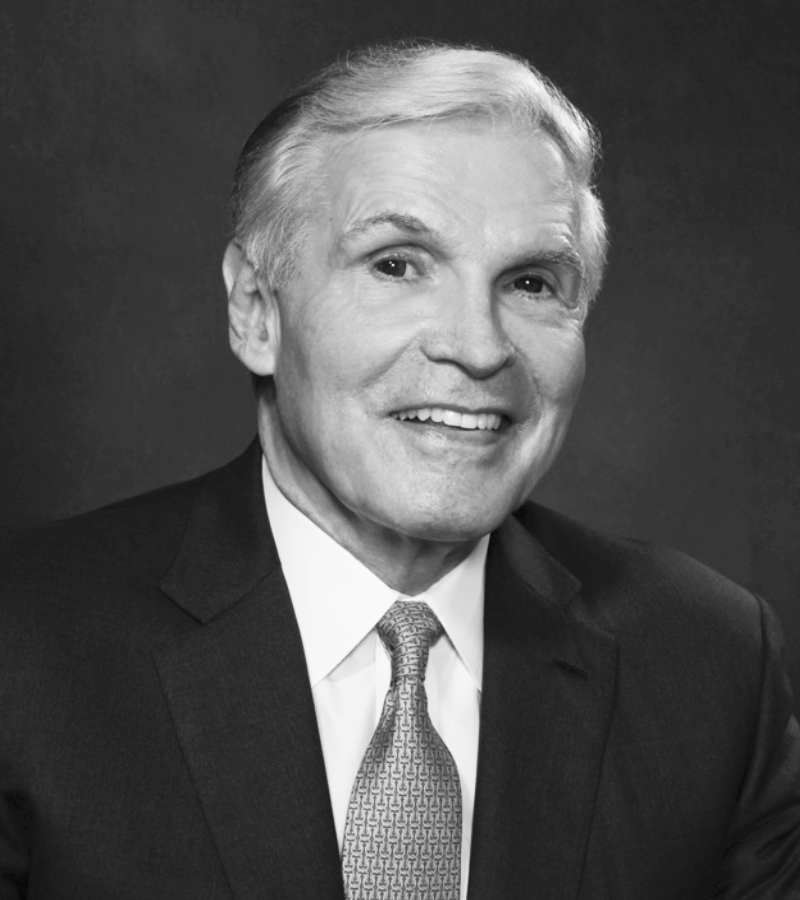
Ray Chambers is Vice-Chairman and Co-Founder of the Partnership for Digital Access in Africa. Chambers is Ambassador to the World Health Organization for Technology and Health Financing, Chairman of Wesray Social Investments LLC and Chairman of the MCJ Amelior Foundation. Most recently, Mr. Chambers served as the United Nations Secretary-General’s Special Envoy for Health in Agenda 2030 and for Malaria. Mr. Chambers is a philanthropist and humanitarian who has directed most of his efforts towards helping children. He is the founding Chairman of the Points of Light Foundation and co-founder, with Colin Powell, of America’s Promise -- The Alliance for Youth. He also co-founded the National Mentoring Partnership. He is the Founding Chairman of the New Jersey Performing Arts Center and is the former Chairman of Wesray Capital Corporation, which he co-founded with William E. Simon. He is also the co-founder of the YES Network.
Former CEO of In-Q-Tel and current CEO of America’s Frontier Fund

The Honorable Gilman Louie is CEO and co-founder of America’s Frontier Fund, where he is responsible for the vision and leadership of the organization. Gilman brings over 30 years of national security and investment experience. He served as an early CEO of In-Q-Tel—the pioneering technology investment firm funded by the CIA—from 1999-2006, as an expert and Special Government Employee to the Defense Innovation Board from 2016-2020, and as a Commissioner on the National Security Commission on Artificial Intelligence from 2018-2021. In addition to his role at America’s Frontier Fund, Gilman is currently the Chairman of the National Intelligence University, Chairman of the Federation of American Scientists, a member of the President’s Intelligence Advisory Board, a member of the U.S. Department of State’s Foreign Affairs Policy Board, and co-founder of Alsop Louie Partners. Gilman is the recipient of the CIA Agency Seal Medallion (2004), CIA Director’s Award (2006), Agency Seal Medallion (2006), and Director of National Intelligence Medallion (2008).
Group Executive Director, Commercial Operations at Dangote Industries Limited

Fatima Aliko-Dangote is currently the Group Executive Director of Dangote Industries Limited (DIL). In this role, she oversees the Group's Commercial operations across the Dangote Business units, activities of the Group’s Brand and communications, Strategic Procurement and the general administration of the Group. In her previous role, Fatima was the Executive Director of Commercial at NASCON Allied Industries Plc (NASCON), the leading player in Salt Refining and Marketing across Nigeria.She was responsible for developing and implementing NASCON’s Commercial Sales and Marketing strategy with additional oversight for Logistics, Transportation and Branding. Prior to this, Fatima held multiple roles within Dangote Industries Limited (DIL) the parent company of the Dangote Group. Fatima is passionate about philanthropy. She is a trustee on the board of the Aliko Dangote Foundationand a trustee on the board of Africa Center.
Former President of Liberia
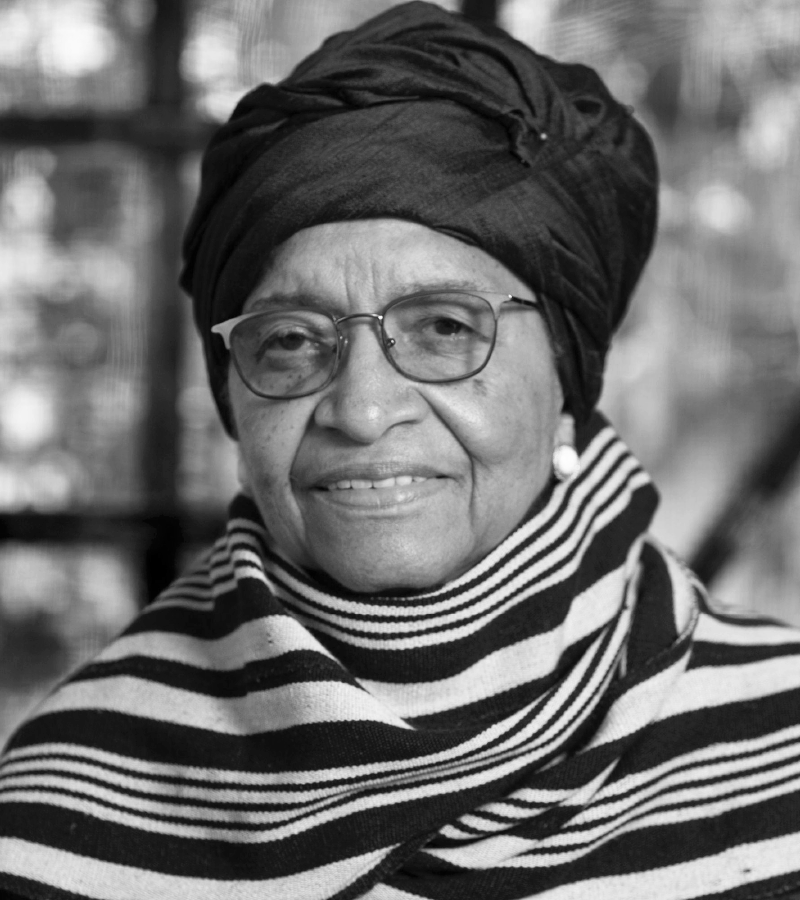
Her Excellency President Ellen Johnson Sirleaf, a Nobel Peace Prize laureate, was Liberia’s and Africa’s first democratically elected female Head of State. Internationally known as “Africa’s Iron Lady,” She led Liberia through reconciliation and recovery following the nation’s two decade-long civil war as well as through its Ebola crisis, winning international acclaim for achieving economic, social, and political change. Recognized as a global leader for women’s empowerment, President Johnson Sirleaf was awarded the Nobel Peace Prize in 2011. Post Presidency and in the wake of COVID-19, on March 8, 2020, she launched the Ellen Johnson Sirleaf Presidential Center for Women and Development which aims to create a network of accomplished women across Africa, facilitating an open and honest exchange of ideas and creating opportunities for them to develop new skills for public service leadership.
CEO
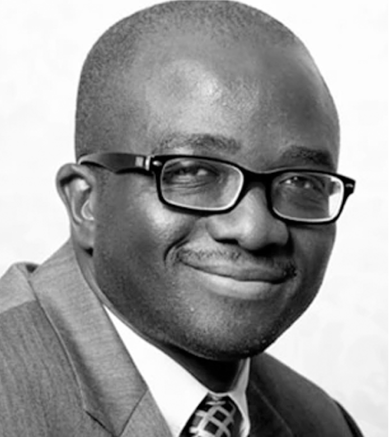
A seasoned international leader and a firm advocate for “Technology for Good,” Ibrahima Guimba-Saidou has over 25 years of experience in technical, management, government, and leadership roles across various sectors, from international organizations to government and the private sector. Ibrahima’s career is marked by significant contributions to digital transformation, particularly in his home country of Niger, where he served as the Minister Special Advisor to the President and CEO of the National Agency for Information Society (ANSI) until July 2023.
During his tenure, Ibrahima led the development and implementation of Niger’s first Digital Transformation strategy, known as Niger 2.0. This comprehensive five-year billion-dollar program, involving the launch of the region’s first Innovation Hub, Coding Academy, and Drone and Data Academy, gained international acclaim and inspired numerous countries and institutions globally. He also initiated the African national competition on innovation, eTakara, and pioneered the Smart Village program, digitally connecting over 2,500 previously unconnected communities and benefiting more than 2 million people. This program became a flagship initiative recognized by global institutions such as the World Bank and the United Nations.
On the global stage, Ibrahima is an esteemed figure in the ICT and digital industry. His advisory roles include the UN SDG Labs, the King of Bahrain UNESCO Prize for ICT in Education, the EU-AU Digital Economy Task Force, the World Economic Forum's Regional Action Group for Africa, the Global Blockchain Business Council, and the ITU/UNICEF GIGA initiative.
Ibrahima’s experience includes serving as Senior Vice-President at SES (Société Européenne de Satellites), where he established the company's presence in Africa and significantly increased regional revenues, and Managing Director at Intelsat in Luxembourg, where he established the corporation’s first African office and spearheaded the company’s first Regional Strategy and Marketing department with offices on every continent. Over his tenure at Intelsat, Ibrahima doubled the company's revenues in his regions of responsibility.
Ibrahima holds an MBA and a Master of International Management from the University of Maryland Global Campus, and a Bachelor's degree in Electrical Engineering from Polytechnique Montréal. His additional training includes executive education programs from The Wharton School and the National Leadership Institute.
Ibrahima is a former member of Niger National Basketball team, former soccer player in Niger Top Division and black belt in Judo.
Minister of ICT and Innovation of Rwanda
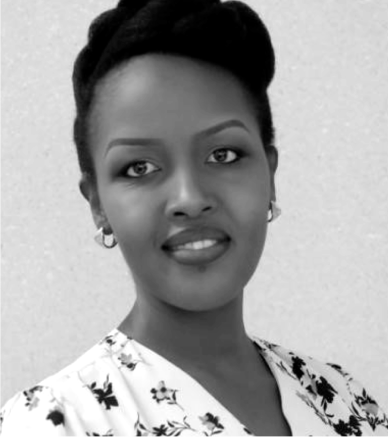
Paula Ingabire is a Rwandan technology enthusiast currently serving as the Minister of ICT and Innovation in the Government of Rwanda. Prior to her appointment as Minister, she served as Head of the ICT Business Development Department at the Rwanda Development Board where she led the implementation of National ICT programs notably eGovernment and Cyber Security and coordinator of the Kigali Innovation City, a project designed to nurture and strengthen a Pan-African Innovation eco-system. She coordinated the creation of Smart Africa, an initiative that seeks to leverage broadband infrastructure as a driver for Africa’s socio- economic growth.
She is a graduate of the MIT’s School of Engineering & Sloan School of Management, in System Design and Management. With 10 years’ experience leading ICT programs for economic development, she’s a keen advocate of the role of innovation and emerging technologies towards driving economic growth.
Paula was named by Apolitical (2019) among the Top 20 of the World’s 100 most influential people in digital government. She serves on the Global Council of the World Summit Award Board of Directors, World Economic Forum Cyber Security Board and Centre for the Fourth Industrial Revolution Global Network Advisory Board.
Minister of ICT and Innovation of Rwanda

Paula Ingabire is a Rwandan technology enthusiast currently serving as the Minister of ICT and Innovation in the Government of Rwanda. Prior to her appointment as Minister, she served as Head of the ICT Business Development Department at the Rwanda Development Board where she led the implementation of National ICT programs notably eGovernment and Cyber Security and coordinator of the Kigali Innovation City, a project designed to nurture and strengthen a Pan-African Innovation eco-system. She coordinated the creation of Smart Africa, an initiative that seeks to leverage broadband infrastructure as a driver for Africa’s socio- economic growth.
She is a graduate of the MIT’s School of Engineering & Sloan School of Management, in System Design and Management. With 10 years’ experience leading ICT programs for economic development, she’s a keen advocate of the role of innovation and emerging technologies towards driving economic growth.
Paula was named by Apolitical (2019) among the Top 20 of the World’s 100 most influential people in digital government. She serves on the Global Council of the World Summit Award Board of Directors, World Economic Forum Cyber Security Board and Centre for the Fourth Industrial Revolution Global Network Advisory Board.
Regional Director, Google Government Affairs & Public Policy, Sub-Saharan Africa
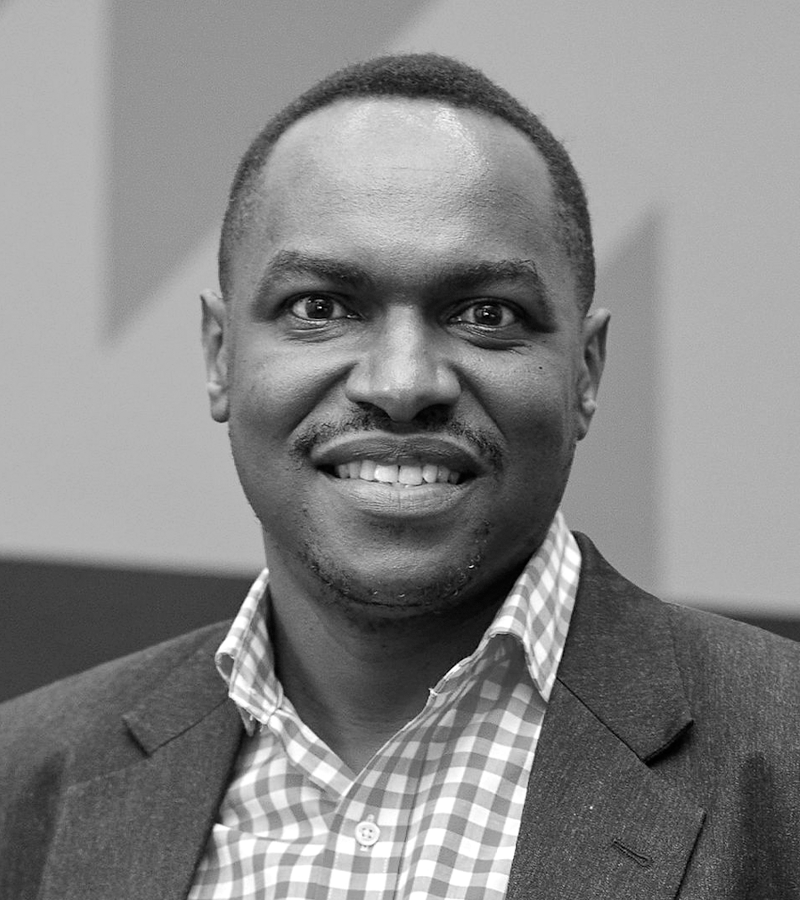
Charles Murito is Google's Regional Director, Government Affairs & Policy, Sub Saharan Africa.
In this capacity, Charles is responsible for overseeing engagement with Governments & Regulators to promote digital transformation through progressive policy, to achieve economic growth.
Charles assumed this role after almost six years as Google’s Country Director for Kenya. Before Google, he held senior roles at MTV, Warner Bros., and Turner Broadcasting.
Charles also serves as a Board Director for Absa Bank Kenya, and previously served as a Board Director for CSQuared, a Google portfolio company.
Outside of work, Charles loves art, food, and farming.
Head of Digital Inclusion and a Member of the Executive Committee for the World Economic Forum

As Head of Digital Inclusion, Kelly combines her expertise in technology, policy, and partnerships with her commitment to social equity to drive meaningful change. Through flagship initiatives which she is leading, such as the EDISON Alliance and the Forum's portfolio on GovTech, she champions public-private partnerships to help bridge the digital divide and enable meaningful digital transformation.
Prior to this position, Kelly served as the Chief of Staff to the Founder and Executive Chairman of the World Economic Forum for over 5 years, as well as managed the Forum's Board of Trustees, its top governance body, and served as the official secretary.
Kelly was responsible for creating and leading the Global Collaboration Village, the Forum’s presence in the metaverse, as well as building a vibrant community of 100+ Village Partners. She has previously led the government and regional partnerships for the Forum’s work on technology, as well as responsible for the relationship with the US Government in the Forum’s New York office.
Kelly has a diverse background in the public sector and civil society. She also holds a Master of Science in Foreign Service from Georgetown University and a degree in Political Science from the University of Michigan.
President and CEO of Corporate Community Connections, Inc.
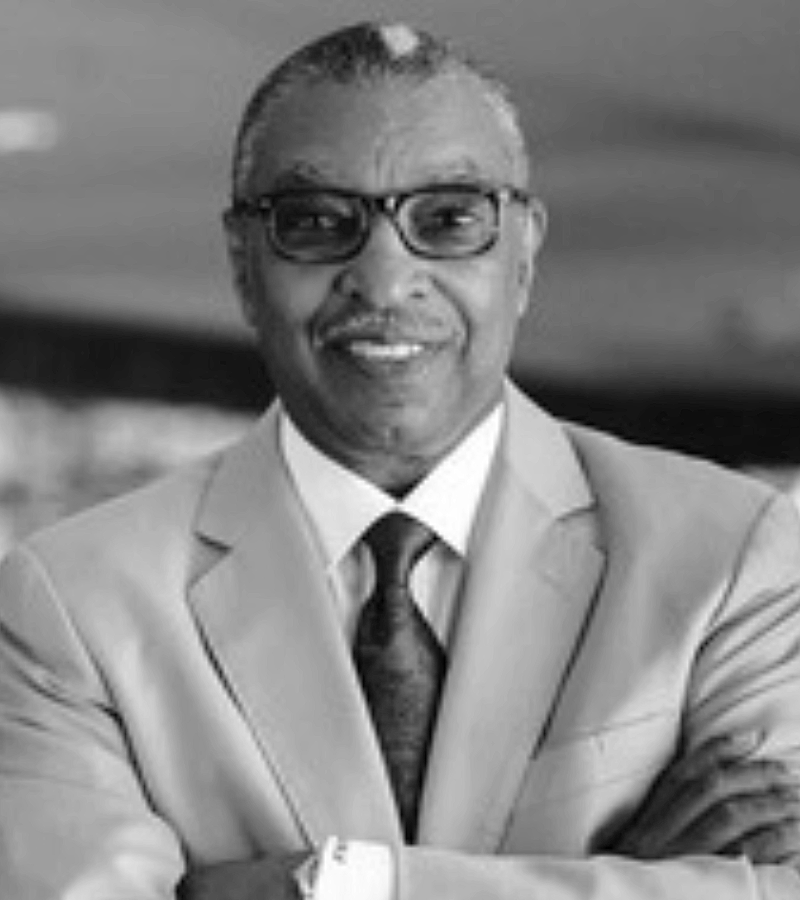
Dr. Soaries is the President and CEO of Corporate Community Connections, Inc., a company that assists corporations expand and improve their Corporate Social Responsibility efforts. In July 2021he retired from 30 years of ministry as the third Senior Pastor of First Baptist Church of Lincoln Gardens (“FBCLG”) in Somerset, New Jersey. His pastoral ministry focused on spiritual growth, educational excellence, economic empowerment, and faith-based community development. As a pioneer of faith-based community development, Dr. Soaries’ impact on FBCLG and the community was tremendous. In 1992, he founded the Central Jersey Community Development Corporation (“CJCDC”), a 501(c)(3) non-profit organization that specializes in helping revitalize underserved and vulnerable neighborhoods. In 1996, the CJCDC launched Harvest of Hope Family Services Network, Inc. This organization developed permanent solutions for hundreds of foster children and parents.
In 2018 Dr. Soaries was inducted into the The Martin Luther King Jr Board of Preachers at Morehouse College.
From 1999 to 2002, Dr. Soaries served as New Jersey’s Secretary of State, making him the first and only African-American male to serve in that office. He also served as the former chairman of the United States Election Assistance Commission, which was established by Congress to implement the “Help America Vote Act” of 2002.
In 2005, Dr. Soaries launched the dfree® Financial Freedom Movement. The dfree® strategy teaches people how to become financially self-sufficient. His work in financial empowerment was featured in a CNN documentary.
In 2017 Dr. Soaries was enstooled as Nkosuohene (Development Chief) for the Akyem Abuakwa Traditional Area of Ghana by Osagyefuo Amoatia Ofori Panin who is the 35th Chief of Akyem Abuakwa, also called Okyeman in the Eastern Region of Ghana.
Dr. Soaries has written 12 books including “Say Yes to No Debt” and “Say Yes When Life Says No.” He is the host of a weekly radio show “For Your Soul” on SiriusXM Urban View. He has been recognized by eight colleges and universities with honorary doctorate degrees.
Dr. Soaries currently serves as an Independent Director at Independence Realty Trust and Onity Financial Corporation. He served as an Independent Director at the Federal Home Loan Bank of New York for 16 years. He also serves as a Trustee of RWJ Barnabas Health.
Soaries earned a Bachelor of Arts Degree from Fordham University, a Master of Divinity Degree from Princeton Theological Seminary, and a Doctor of Ministry Degree from United Theological Seminary. Dr. Soaries resides in Sarasota, Florida with his wife, Donna.
President and CEO of the Internet Society and the Internet Society Foundation

Sally Wentworth is the President and CEO of the Internet Society and the Internet Society Foundation, dedicated to fostering an inclusive Internet for all. With a strong belief in the Internet's potential for social and economic development, she engages communities on vital issues and highlights the transformative impact of her organizations' work worldwide.
Since joining in 2009, Sally has focused on creating coalitions among diverse stakeholders and promoting global public policies that support a connected Internet. She is especially committed to bridging the gap between Internet technical experts and policymakers.
Prior to the Internet Society, she served as Assistant Director for Telecommunications and Information Policy at the White House Office of Science and Technology Policy from 2007 to 2009, where she coordinated complex Internet policies and advised senior officials. Her expertise encompasses areas including Internet governance, cybersecurity, and telecommunications policy.
President and CEO of the Mastercard Foundation

Reeta Roy has been the President and CEO of the Mastercard Foundation since 2008. With assets of close to $47 billion, the Mastercard Foundation is among the top five private foundations in the world. In 2018, the Foundation launched the Young Africa Works strategy to enable 30 million young people in Africa to access dignified and fulfilling work by 2030. To execute this strategy, the Foundation opened offices in seven countries in Africa. In response to the COVID-19 pandemic, Reeta and the Board worked swiftly to launch “Saving Lives and Livelihoods,” an unprecedented $1.5 billion partnership with the Africa Centres for Disease Control and Prevention, hailed by donors as a model to address global inequities. Reeta holds a Masters of Arts in Law and Diplomacy and has received ten honorary doctorate degrees. She is a member of the African Transformation Leadership Panel, and the Advisory Board of the Schwartz Reisman Institute for Technology and Society at the University of Toronto.
Managing Director of the International Finance Corporation
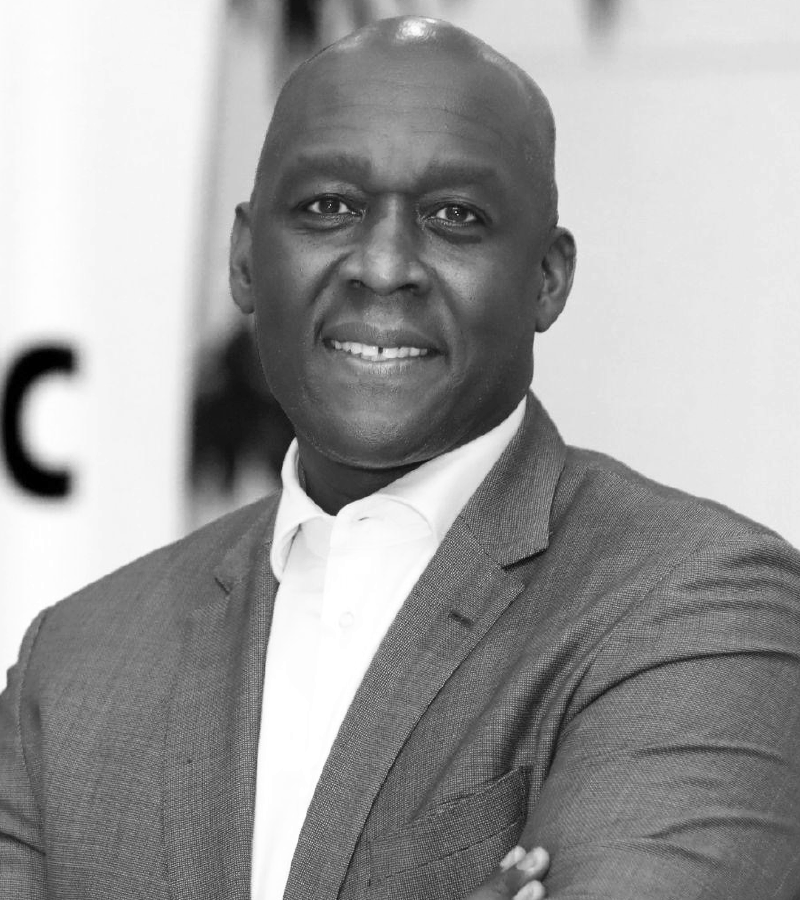
Makhtar Diop is the Managing Director of the International Finance Corporation, the private sector arm of the World Bank Group, and the largest global development institution focused on the private sector. As the head of IFC, Mr. Diop is focused on mobilizing investments in emerging and developing economies to ensure a resilient, inclusive, and sustainable future. His priorities include addressing the intertwined challenges of poverty and climate change, promoting entrepreneurship and social inclusion, and connecting emerging markets with the digital economy. Mr. Diop has served in leadership positions in both the public and private sectors throughout his distinguished career, giving him unique insights into global development from every side of the table. An economist by training, he started his career in the banking industry before joining the International Monetary Fund and later the World Bank. He also served as Minister of Economy and Finance for his home country of Senegal.
Former EVP, Global Sales & Merchant Services at PayPal; Current Board Member at Meta and Macerich
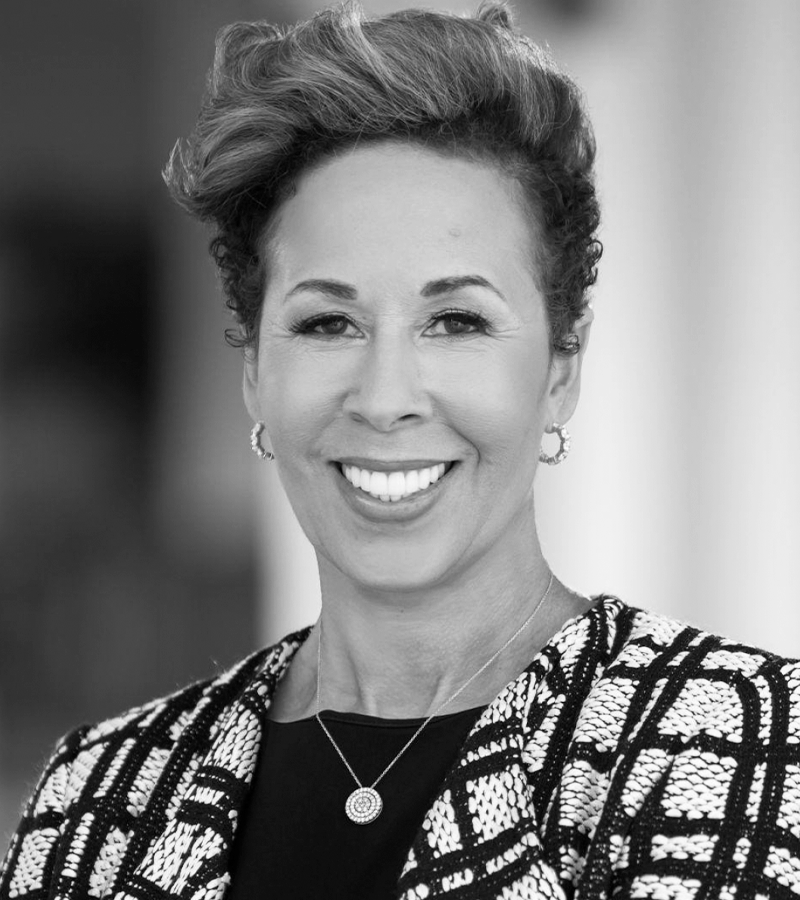
Until January 2024, Peggy was the Executive Vice President-Global Sales & Merchant Services at PayPal, where she led PayPal’s Commercial and Customer Success teams worldwide. She has held numerous senior leadership roles at PayPal, including SVP of Core Markets; SVP of People Operations; COO Asia Pacific and CFO for the Americas. In 2019, Peggy returned to PayPal after two years as CFO and Head of Operations at the Chan Zuckerberg Initiative, a philanthropic organization. Prior to joining PayPal in 2011, Peggy worked at Rent.com, a national internet real estate listing service and former subsidiary of eBay Inc., where she served as President, General Manager and Chief Financial Officer. She serves on the Board of Directors of Meta and, from 2008-2024, Macerich. Peggy also serves as a Champion for Journey to Lead, an organization whose mission is to accelerate the diversity and trajectory of women in leadership by connecting the world’s most promising emerging talent with the most impactful women leaders.
President of the World Economic Forum
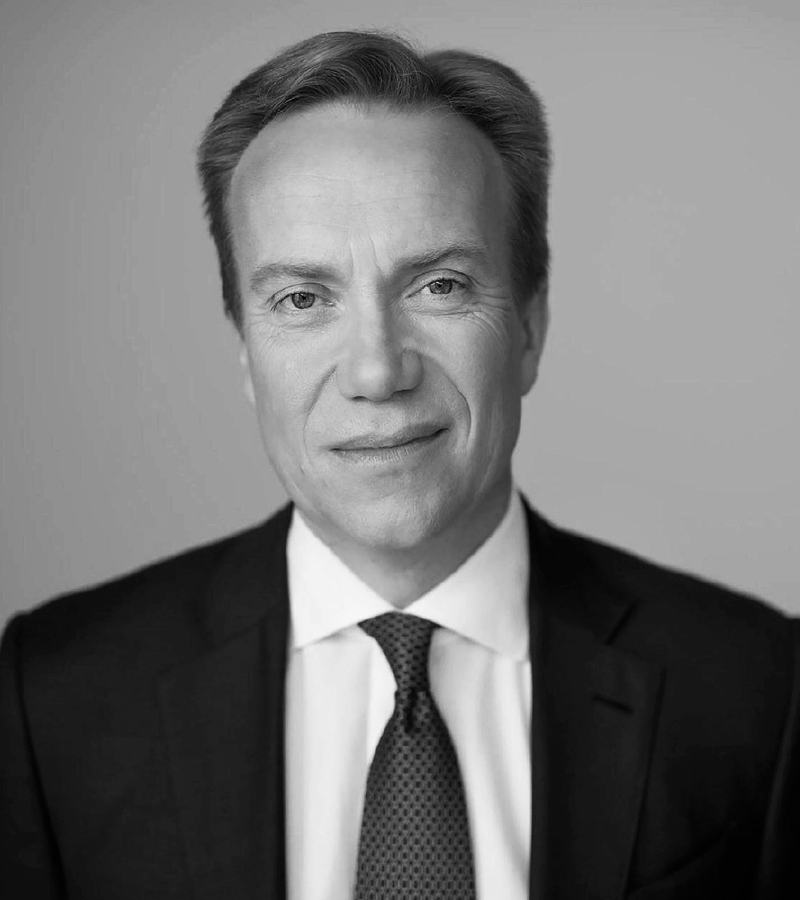
Børge Brende is the president of the World Economic Forum (2017). Previously he was the Norwegian Minister of Foreign Affairs, Minister of Trade and Industry, and Minister of Climate and the Environment. He served as Deputy Chairman of the Norwegian Conservative Party as well as MP. He was also full-time city counselor in his hometown of Trondheim. He was Chairman of the UN Commission on Sustainable Development and Secretary-General of the Norwegian Red Cross. He was a Board Member of Statoil and the Norwegian School of Economics. He was the Chair of Mesta, Norway’s largest contracting group in the area of road and highway maintenance and is currently a Director of the Philanthropy Asia Alliance. Mr. Brende is a Member of the Advisory Council, Harvard International Negotiation Program, the China Council for International Cooperation onEnvironment and Development (CCICED), the Strategic Committee of Sciences Po, and is currently on the Board of the Bilderberg Meetings.
Former Commissioner of the Federal Communications Commission of the United States

Mignon L. Clyburn served as Commissioner on the Federal Communications Commission (FCC) from 2009 to 2018, and acting chair from May to November of 2013. During her nearly nine years at the FCC, Commissioner Clyburn was committed to closing persistent digital and opportunity divides that continue to challenge rural, Native and low wealth communities. Specifically, she pushed for the modernization of the agency’s Lifeline Program, which assists low income consumers in defraying the cost of voice and broadband service, championed diversity in media ownership, initiated Inmate Calling Services reforms, emphasized diversity and inclusion in STEM opportunities, and fought to preserve a free and open internet. Previously, Clyburn served 11 years on the South Carolina Public Service Commission. Prior to that, she was the publisher and general manager of the Coastal Times, a family-founded, Charleston-based weekly newspaper focusing on issues affecting the African American community. She is currently the principal of MLC Strategies, LLC, a Washington, DC based consulting firm.
Director of East Africa at the Ford Foundation
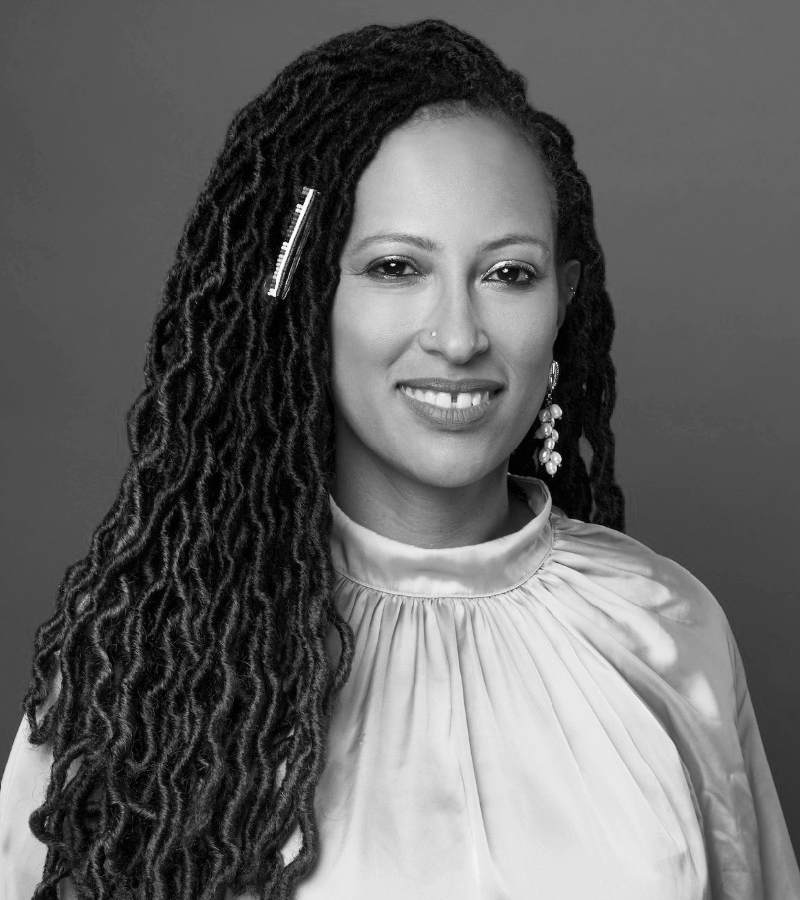
Jessica Horn is Regional Director-East Africa at the Ford Foundation. She oversees the foundation's grantmaking in the region and leads the Nairobi-based team. Jessica has two decades of experience in the work of advancing justice and building both the knowledge base and practice towards inclusive democracies—with women's rights as a focal commitment—primarily in Africa. This includes 16 years in the philanthropic sector. Jessica co-designed early models of participatory philanthropy, and served as Director of Programmes at the African Women’s Development Fund where she oversaw a step-change in grantmaking scale and program focus under afutures-based strategic plan. Her analysis has been published in both academic and media platforms. Jessica served on the Lancet Commission on Gender and Global Health and is currently a board member of the Partnership for Digital Access in Africa and Advisory Board member of Impact Investing Kenya. She is a graduate of Armand Hammer United World College Smith College and the London School of Economics.
Director General of Smart Africa
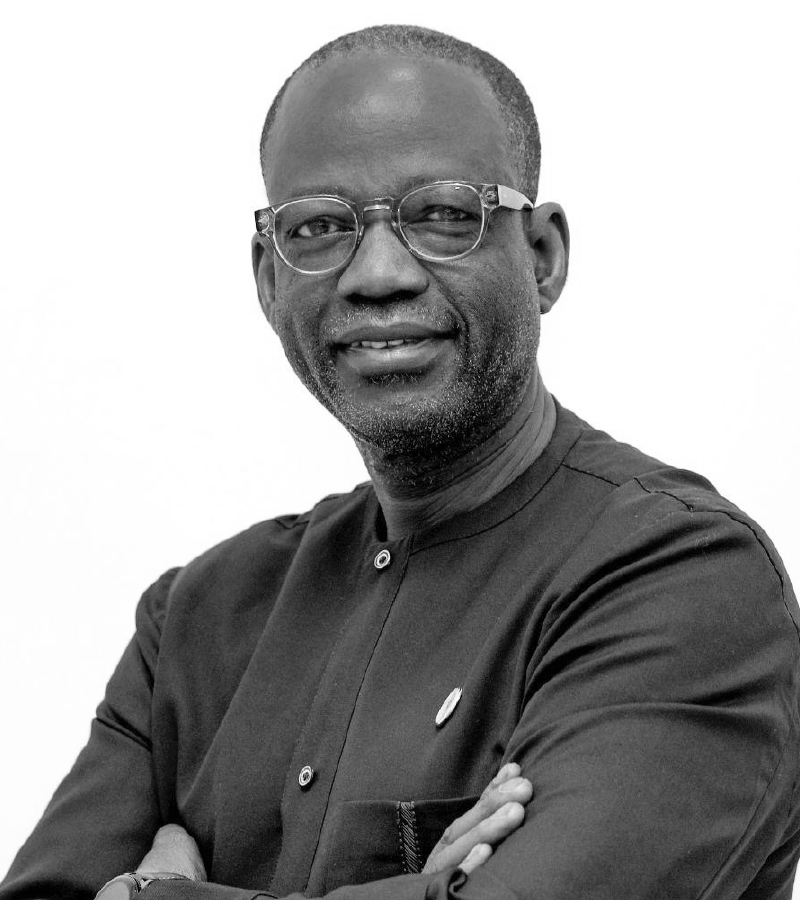
Mr. Lacina Koné, is the Director General and Chief Executive Officer of Smart Africa having joined the organization in March 2019. He oversees the process of defining and advancing Africa’s digital agenda and has overseen the development of continental blueprints for Africa on Digital Identity, ICT Start-ups and Innovation Ecosystems, Smart Villages and Africa’s Smart Broadband 2025 Strategy. In recognition for this work, Mr. Koné has reached the 12th position in 2021 among the 50 personalities advancing Africa’s digital transformation. Prior to that, Mr. Koné was the advisor to the Prime Minister of the Republic of Côte d'Ivoire (2017-2018), in charge of Digital Transformation and Public Reforms, and was also the advisor to the President of Côte d’Ivoire from 2011-2017. Mr. Koné has held several high level technical and managerial positions with prestigious firms such as Booz Allen Hamilton and Intelsat. He also sits on the advisory boards of Benya Capital in Egypt and Townlabour Technologies in the USA.
Former Chair of Weber Shandwick
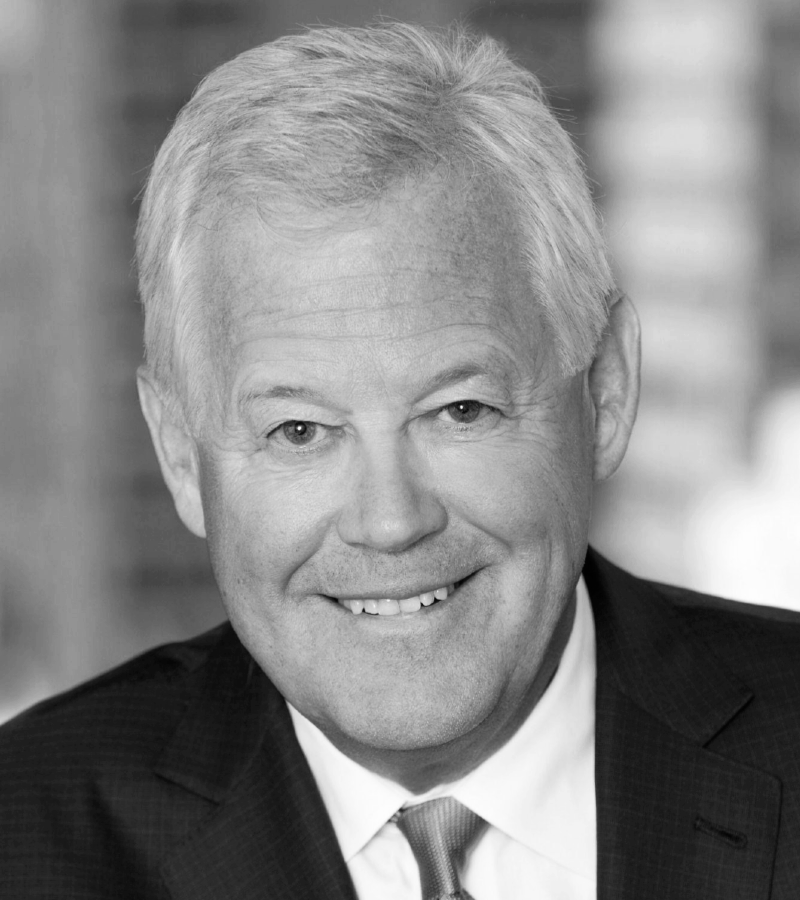
Jack Leslie is the former Chairman of Weber Shandwick, one of the world’s leading public relations and public affairs firms. He was appointed by President Obama and confirmed by the US Senate to Chair the Board of Directors of the US African Development Foundation (USADF), an independent federal agency. Jack is a veteran communications strategist, having advised corporations and governments on high-profile campaigns over the past three decades. Jack served as a senior aide to Senator Edward Kennedy in the late 1970s, and later became President of Sawyer Miller Group, a pioneer in the political media consulting business. Jack is a member of the Council on Foreign Relations, former Chairman of theU.S. Agency for International Development Advisory Committee on Voluntary Foreign Aid, former Chairman of USA for UNHCR and is currently a Distinguished Professor at Georgetown University and a Visiting Fellow at the Duke Global Health Institute.
CEO and co-founder of M-KOPA
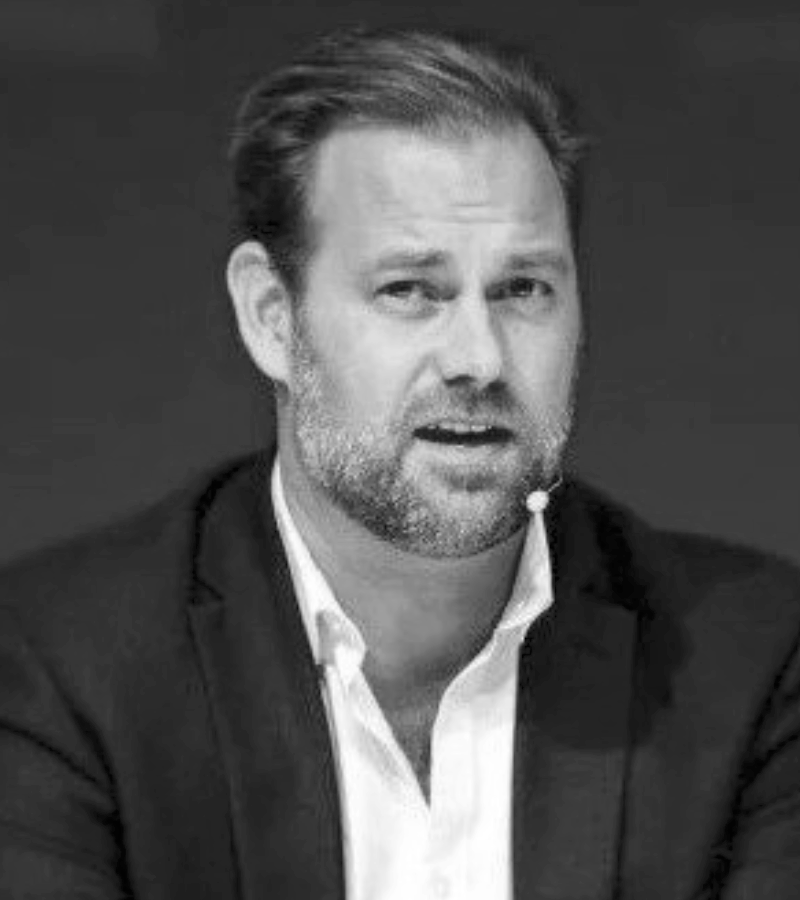
Jesse Moore is CEO and Co-Founder of M-KOPA, the pioneering company that provides connected financing to underbanked customers. Since the commercial launch in 2012, M-KOPA has financed over 4 million customers across Africa with affordable solar home power systems, commerce enabling smartphones, and electric motorcycles. Jesse has overseen the company’s growth from startup to over 2,000 employees and 30,000 sales agents. M-KOPA currently has offices in Kenya, Uganda, Ghana, Nigeria, South Africa and the UK. The company was named as one of Time Magazine’s TIME100 Most Influential Companies (2023 and 2024) and as one of the Fastest Growing Companies in Africa by the Financial Times (2022 and 2023). Jesse was selected by the World Economic Forum as one of 100 Young Global Leaders in 2017, and by The Business Daily as one of Kenya’s Top 40 under 40 in 2016.
President and CEO of CARE and Consortium Lead of the Women in the Digital Economy Fund (WiDEF)
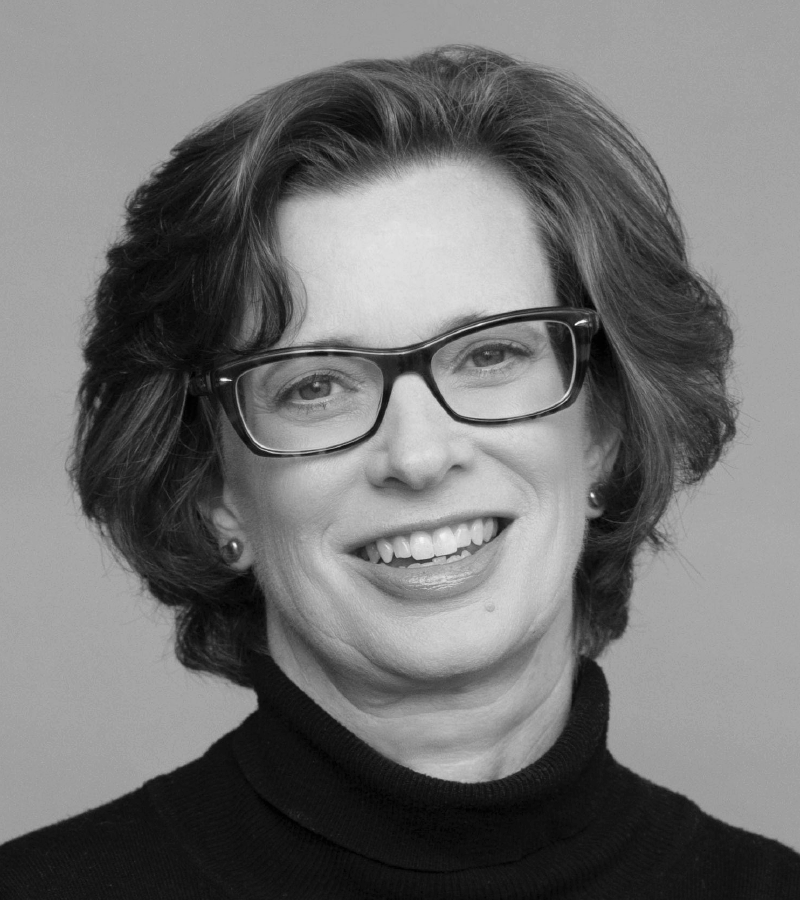
Michelle Nunn leads more than 8,000 people working in more than 100 countries to save lives, defeat poverty, and achieve social justice. In her nine years at the helm, CARE has taken its fundraising and impact to new levels, reaching more than 167 million people in 2023. CARE takes a holistic and innovative approach to crisis response, food and water, health, education and work, and climate change, and strives for its work and operations to be locally led, globally scalable, and gender equal. Nunn believes in human solidarity, that lasting impact comes from people advocating for change at the community level, and that the most powerful tools are often also the simplest. She co-founded the volunteer-mobilization nonprofit Hands On Atlanta, led its 2007 merger with President George H.W. Bush’s Points of Light, and was Points of Light CEO for six years.
Former Minister of Health of Botswana and Executive Secretary of the African Leaders Malaria Alliance (ALMA)
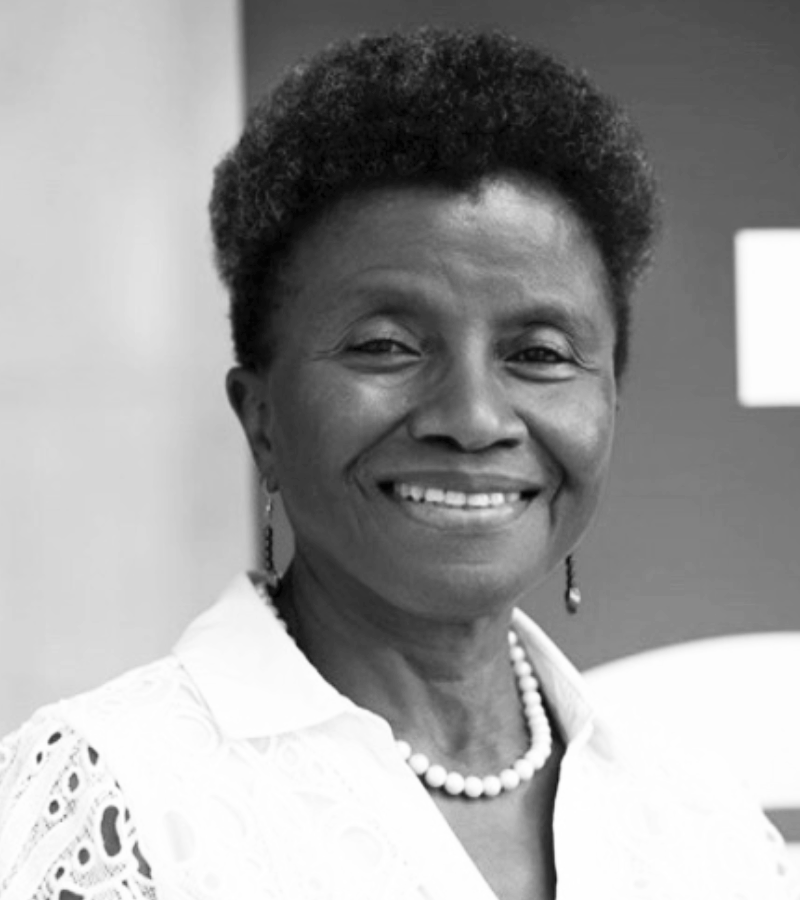
Joy Phumaphi co-chairs the Global Pandemic Preparedness Monitoring Board. She is also currently the Executive Secretary of the African Leaders Malaria Alliance, an alliance of all African Heads of State and Government and Chairs the Global RBM Partnership to end Malaria, as well as Safe to learn-Ending violence against children. She is co-chair of the Partnership for Maternal, Newborn & Child Health (PMNCH) Partner Engagement in Countries Committee. She formerly co-chaired the UN Secretary General’s Independent Accountability Panel for Women, Children and Adolescent Health. She was a member of the UN High Level Panel on Global Response to Health Crises; and has served as a member of the UN Reference Group on Economics and as a UN Commissioner on HIV/AIDS and Governance. She has also served as Vice President for Human Development at the World Bank where she oversaw a dramatic expansion of the network evaluation program.
CFO of Nuveen
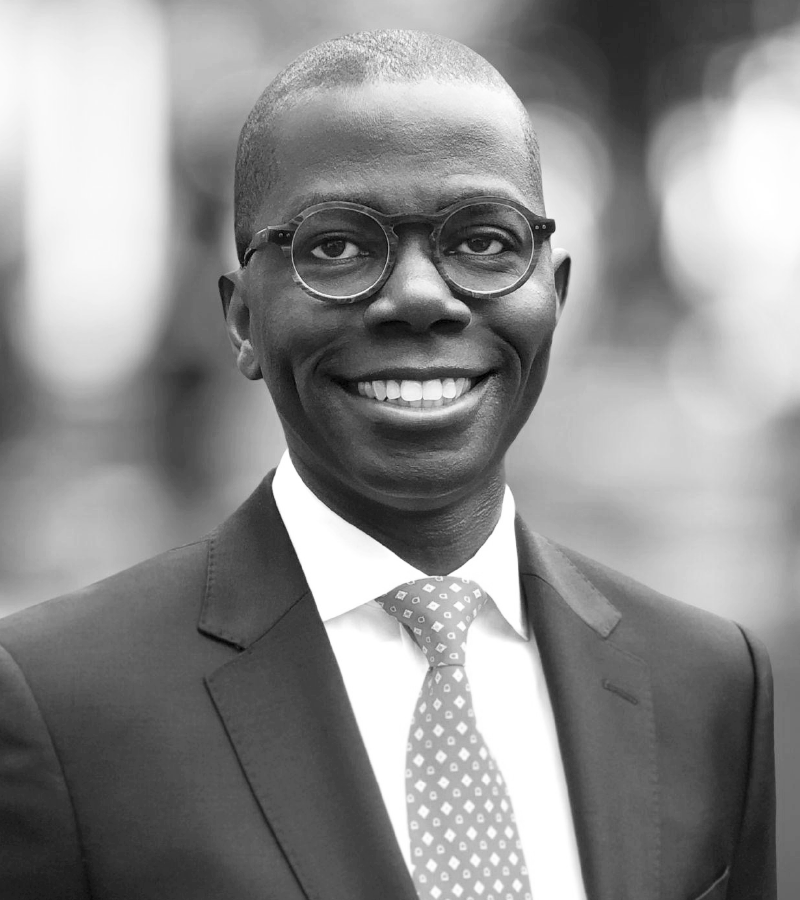
Seun is Chief Financial Officer of Nuveen and a member of the Executive Leadership Team. He joined TIAA, the firm’s parent company, in May of 2018 and served as corporate controller, both the chief accounting officer and principal financial officer of TIAA Real Estate Account and, most recently, as TIAA’s interim chief financial officer. An executive with a successful track record of leading multifunctional finance and operations teams and driving results for global organizations, Seun came to TIAA/Nuveen from Jones Lang LaSalle Inc (JLL), a Fortune 500 global real estate company. Before his time at JLL, he spent over a decade at Deloitte serving Fortune 500 clients, specializing in the insurance, asset management, and retail pharmacy sectors. In addition, he led numerous programs focused on business development, diversity and inclusion, and was an Ellen P. Gabriel Fellow.
CEO of the Clinton Health Access Initiative and Trustee of the Anthropic Trust
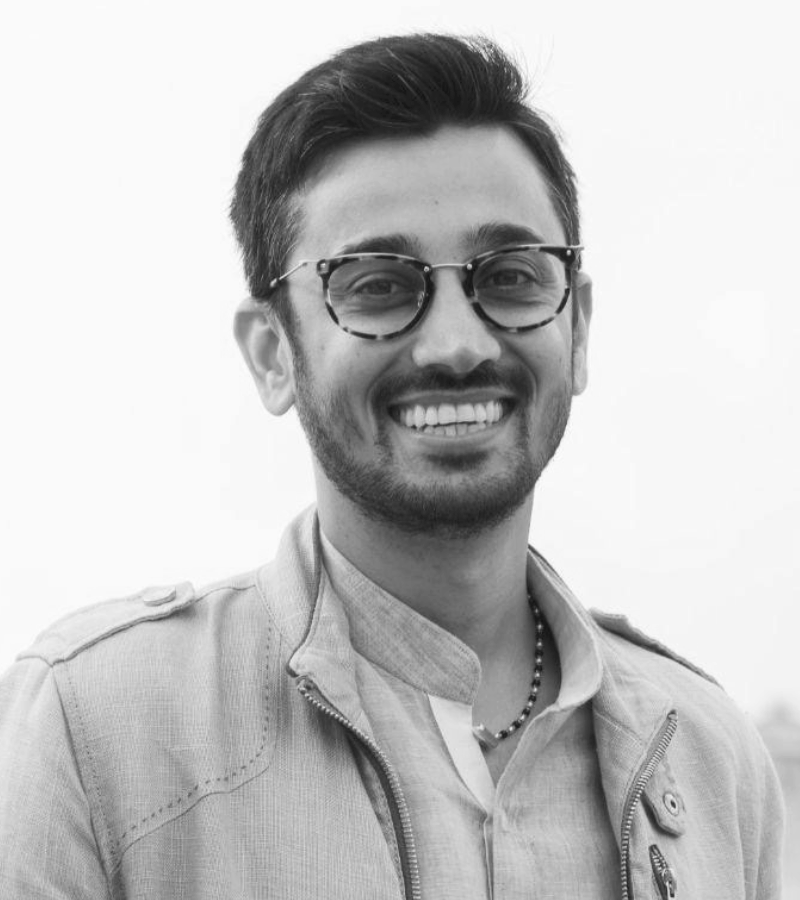
Dr. Neil Buddy Shah is the CEO at the Clinton Health Access Initiative (CHAI), a global health organization operating in 36 countries around the world, committed to saving lives and improving health outcomes in low- and middle-income countries. Dr. Shah was previously the Managing Director of GiveWell, a research and funding organization that directs hundreds of millions of dollars per year to programs in global health and development. He is the co-founder, former CEO and now Board Chair of IDinsight, a global development data analytics and advisory firm with offices across Africa, Asia, and the US. He worked previously at the World Bank and MIT’s Jameel Poverty Action Lab. Dr. Shah holds an AB in economics from Harvard, an MD from Einstein College of Medicine in New York, and an MPA in International Development from the Harvard Kennedy School. He is the Chair of Anthropic AI's Long-Term Benefit Trust and also sits on the boards of Educate Girls, the Prevail Fund, and the Harvard Law School Institute to End Mass Incarceration.
President of the Rockefeller Foundation
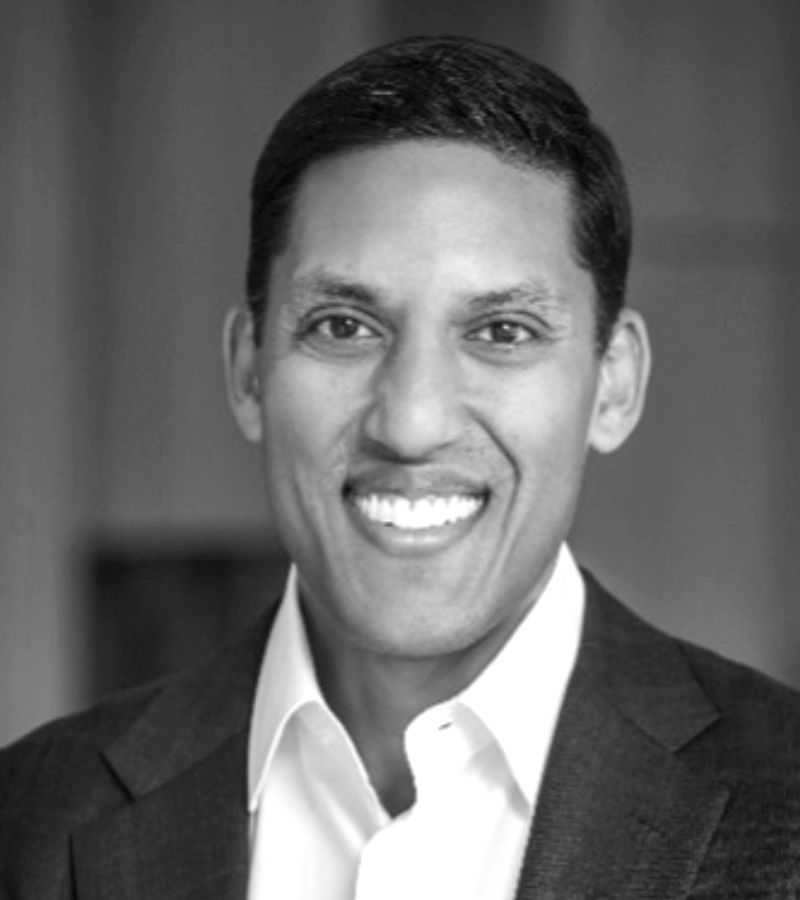
Raj Shah is president of the Rockefeller Foundation, a global institution committed to promoting the well-being of humanity around the world through data, science and innovation. Under his leadership, the foundation raised and deployed more than $1 billion to respond to the COVID pandemic at home and abroad, launched a $10 billion Global Energy Alliance for People and Planet to help secure a just and green recovery, and is currently seeking to advance human opportunity even while reversing the climate crisis. Raj serves on President Biden’s Defense Policy Board and is a member of the American Academy of Arts and Sciences and the Council on Foreign Relations. In October 2023, he published Big Bets: How Large-Scale Change Really Happens, sharing a dynamic new model for realizing transformative change, inspired by his own work, the Foundation’s, and changemakers from around the world. He is married to Shivam Mallick Shah and they have three children.
Former Dean at Harvard T.H. Chan School of Public Health
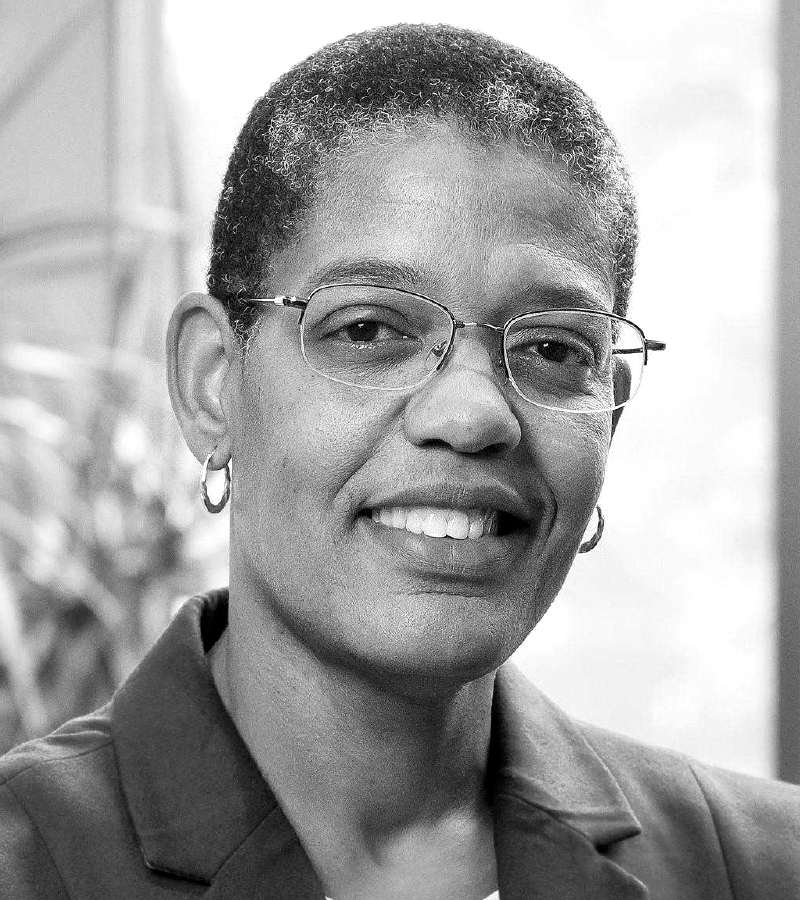
Michelle A. Williams is a renowned epidemiologist, an award-winning educator, and a widely recognized academic leader. She recently stepped down as Dean of the Faculty at the Harvard T.H. Chan School of Public Health after seven years, and is currently spending a sabbatical year as a Visiting Professor at Stanford University. Following her sabbatical, she will return to the Harvard Chan School as the Joan and Julius Jacobson Professor of Epidemiology and Public Health. Prior to becoming Dean, she was Professor and Chair of the Department of Epidemiology at the Harvard Chan School and Program Leader of the Population Health and Health Disparities Research Programs at Harvard’s Clinical and Translational Sciences Center. Her research places special emphasis in the areas of reproductive, perinatal, pediatric, and molecular epidemiology. In 2020, she was awarded the Ellis Island Medal of Honor and recognized by PR Week as one of the top 50 health influencers of the year.
Minister of Digital Economy and Transformation of Togo
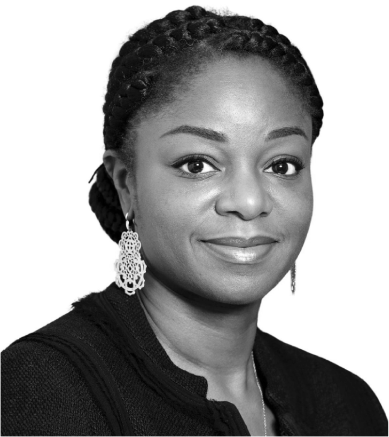
Cina Lawson is Togo’s Minister of Digital Economy and Transformation. Drawing from over 20 years of experience and expertise in digital policy and regulation, she has led Togo’s successful transition to an inclusive digital economy.
Lawson began her career at the World Bank in Washington, D.C, assisting governments in emerging markets in executing regulatory reforms. She then worked for Alcatel-Lucent in Paris before joining Orange Group in New York City as Manager of Corporate Strategy and Business Development.
As a minister, she transformed the regulatory environment to foster innovation, competition, and private investments. She has been uniquely innovative in championing private sector investment in the public's interest via joint ventures and partnerships with global enterprises (e.g., Google, CSquared, Asseco, Axian).
Under Lawson’s leadership, Togo became the first West African country to deploy 5G services. Over the last decade, she increased digital service penetration so that a majority of the population now has access to mobile telephony (from 33% in 2010 to 78% in 2021) to mobile internet (from 1% in 2010 to 74% in 2021), and to mobile money (from 1% in 2013 to 57% in 2021).
Lawson also used digital means to better enable financial inclusion. For example, during the Covid-19 pandemic, she initiated and launched the digital cash transfer program Novissi, which distributed $34M in financial aid to a quarter of Togo’s adult population.
Lawson’s leadership has gained international recognition, including from the World Economic Forum, SXSW, and Forbes. In 2019, she received the Harvard Alumni Public Service Award, becoming the first African female public servant honoree since its establishment. Lawson graduated from Sciences Po Paris and earned a Masters of Public Policy from the Harvard University Kennedy School of Government. She speaks Fluent French, English, and Ewe (Mina).
Minister Delegate for the Digital Economy and Innovation of Djibouti
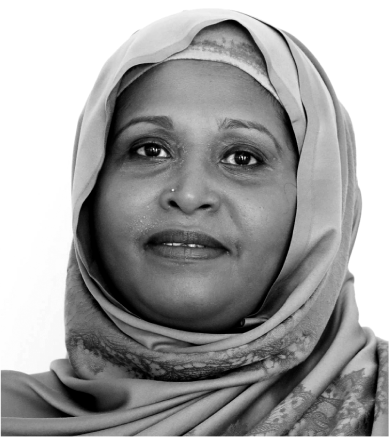
HE Mrs. Mariam Hamadou Ali, born in 1972, began her primary studies in the Dikhil region before continuing her secondary studies in the capital of Djibouti. Subsequently, after obtaining her Baccalaureate, she flew to Morocco for her higher education where she graduated with a Master's degree in economics from the University of FES. She completed her academic studies with the equivalent of DESS at CERDI, in Clermont Ferrand. In 1997, she returned to the country and began her career at the Ministry of Economy and Finance in charge of Planning and was assigned to the Directorate of Economy, Planning and Portfolio. During this period of economic crisis in Djibouti, she worked to produce the first prospective of the Djiboutian economy, covering a period from accession to independence until the early 2000s, allowing Djibouti to have an overview of the state of its economy.
She continued her rise and was appointed Deputy Director of the Economy before being promoted in 2007 to the position of First Female Director of Economy and Planning at the Ministry of Economy and Finance. This period took place in a different economic context where Djibouti was experiencing strong growth guided by the leadership of President Ismail Omar Guelleh. At the head of her department, she worked to give shape to the Vision of the Head of State through a document entitled "Vision 2035".
She will be coordinator of the PARCI/PASED/AMU Institutional Support Project financed by the AfDB; will lead the work in this capacity the five-year plans that will be developed under her supervision, namely the Accelerated Growth Strategy for the Promotion of Employment) 2015-2019 (SCAPE) and the Djibouti National Plan which is based on 3 pillars: Institutions, Connectivity and Inclusion known by the acronym Djibouti ICI 2020-2024. She will also lead the definition of major orientations and development strategies, the formulation of medium-term macroeconomic and sectoral policies.
Her expertise and her in-depth knowledge of the workings of the State will lead her to occupy the position of Vice-President of the macroeconomic framework committee and member of the committee in charge of reforms in the governance of public enterprises and which will be at the origin of the adoption of several draft laws including, among others, the governance code, the law on public-private partnership, the law on the regime of public enterprises. In addition, during her 14 years as head of the Economy Department, she will participate in several boards of directors of public companies. In this capacity, she will serve as Chair of the Board of Directors of Djibouti Telecom and BCIMR. She will be a member for a decade of the rigorous national commission for public procurement.
In May 2021, the President, re-elected on a mandate for youth, formed a new government and appointed her to the newly created portfolio of the Ministry Delegate in charge of the Digital Economy and Innovation. With her extensive experience in public policy management, she will now put it to the service of establishing an ecosystem favorable to the development of the Digital Economy, Innovation and Entrepreneurship.
In March 2022, she presented the Digital Economy roadmap by proposing a new mode of organization in the coordination of the digital transformation of the administration but also creating an ecosystem suitable for digital entrepreneurs by strengthening its players such as the 3 entrepreneurial associations and private incubators that the Ministry has strengthened in IT equipment and financed digital skills training programs for young people. At the same time, in July 2022, she adopted the law that organizes the Ministry and creates two structuring bodies in the implementation of the roadmap, namely the digital project development center that will coordinate the implementation of the dematerialization of public services and the National Digital Identity Agency to organize the governance and implementation of the "ID for All" program in order to allow each individual to have an identity and to use this technological method in the service of the diversification of the economy through the exploitation and implementation of data, strategic elements of the economy of the future. Since May 2022, it has been piloting a vast program of reforms to strengthen the country's main incubator, attached to the MDENI, through the establishment of an accelerator of international standing and the launch in October 2023 of the Startup Act and the establishment of support services for entrepreneurs. The innovation center is being reorganized to accommodate training in digital skills.
In the same perspective, and in accordance with her prerogatives for the establishment of the regulation of the digital economy, Minister Mariam Hamdou led the development of a digital code that provides a favorable legal framework for data protection, electronic communications, e-commerce, cybersecurity, cybercrime, cryptology, consumer rights and eGouv. On September 20, she launched the Startup Act Djibouti project under the high patronage of President Guelleh.
Minister of Digital Economy and Communications of Benin

Aurelie ADAM SOULE ZOUMAROU is a confirmed professional in the digital sector for which she is currently responsible in the Beninese government. She is a major figure in the digital sector in Africa. As a graduate in Telecoms & ICT Engineering, from “Télécom Sud Paris”, and holder of a Certificate in Public Policy Management and Leadership from the Maxwell School of Citizenship and Public Affairs of Syracuse University (New York), Aurelie began her professional career with the SFR company in Paris, where she worked on aspects related to service quality. The young engineer then joined the famous consulting firm ACCENTURE as an Information Systems Consultant.
In 2009, back in Benin, she joined the Electronic Communications and Postal Regulatory Authority (ARCEP-BENIN). In this position, she dealt with issues relating to radiocommunications and the management of radio frequencies; which enabled her to take an active and remarkable part in the preparatory work of Benin and Africa for the World Telecommunication Conference of 2015. It was during that conference that Africa obtained the largest amount of frequencies of all other regions.
Noticed for her leadership, skills and determination, the Global Mobile Industry Association (GSMA) calls on her to build its presence in Africa on regulatory issues relating to the mobile sector. As the Principal Public Policy Officer for the Telecommunications sector in Africa, she handled aspects related to the GSMA's engagement with Governments, Regulators and regional organizations in the African region.
As a Mandela Washington Fellow (MWF YALI) since August 2017 she has been preparing a doctorate in Information and Communication Sciences on the theme "Analysis of policies for the expansion of telecommunication networks and ICT services in rural areas in Africa”, at the Montaigne Doctoral School – Humanities of Bordeaux Montaigne University in France, with the purpose of carrying out further examination of the rural connectivity challenge in sub-Saharan Africa, and to materialize some of the ideas and concepts envisaged.
In October 2017, the President of the Republic of Benin, His Excellency Patrice Talon appointed her as Minister of digital economy and communication, with the ambition of making Benin, the digital services platform of West Africa. She was appointed to that position at age 34, becoming the youngest minister ever appointed by President Patrice Talon since taking office on April 6, 2016. In this position, she is involved in the orchestration of stakeholders and institutional actors, contributing to the digital transformation of Benin, the acceleration of the public policies essential for an effective implementation of the government's digital projects, and the revelation of a vibrant and dynamic ecosystem likely to raise Benin to the rank of the leading digital countries in the region.
These bold actions have led to her appointment as President of the Francophone Network of Ministers in charge of the Digital Economy (RFMEN), created in October 2018 in Yerevan. She was also appointed by the UN Secretary General as a Member of the Task Force on Digital Finance for the Achievement of the SDGs. Apart from her professional responsibilities, Aurelie has always had a strong involvement in community development, as well as in the implementation of actions undertaken with young people and women.
Minister for Communications and Digitalisation of Ghana
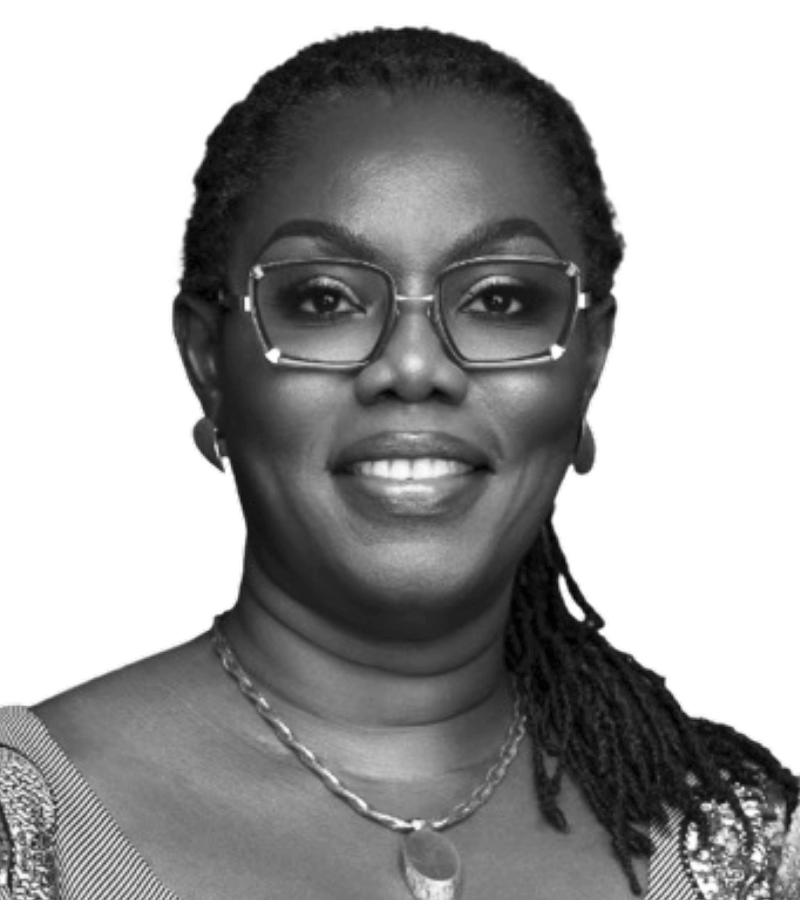
Mrs. Ursula Owusu-Ekuful (MP) has been a pivotal figure in Ghana’s digital transformation, serving as the Minister for Communications and Digitalisation since January 2017. Her leadership extends beyond national borders, as she has been a Commissioner of the Broadband Commission since 2019 and a Partner2Connect Focus Area Leader for Connecting people everywhere. Notably, Mrs Owusu-Ekuful chaired the World Telecommunication Policy Forum 2021 (WTPF-21) and co-chaired the Africa Union and European Union Digital Economy Task Force launched in 2018. Her influence is further demonstrated by her addresses at prestigious global events such as the 2022 Global Standardization Symposium, the 2022 International Telecommunication Union Plenipotentiary Conference, the 2023 Transform Africa Summit, the 2023 Digital Transformation Conference, the 2023 SDG Digital Conference, and the maiden Berlin Global Dialogue.
Minister Ursula's commitment to digital skills development is evident in her initiative to train 5000 girls in basic school annually. Her dedication to bridging the digital divide is further exemplified by implementing a 155m euro government deployment of rural connectivity, a project that allows all service providers to roam. These initiatives are just a few among the many ongoing digitalisation programmes in Ghana, showcasing her relentless efforts to drive digital transformation in the country.
Before assuming her role as a Member of Ghana’s Parliament in January 2013 for the Ablekuma Central constituency in the Greater Accra region, Mrs Ursula Owusu-Ekuful had a rich professional background. She was a member of the Parliamentary Select Committee on Communications, a role that laid the foundation for her current position as the Minister for Communications and Digitalisation. Her experience also includes Serving as the Managing Director of Western Telecommunications (WESTEL) Ltd. and a Managing Consultant with N. U. Consult Legal—Governance and Gender Consultants, further solidifying her expertise in the field.
Mrs Ursula Owusu-Ekuful is a member of the Ghana Bar Association, an Executive Member of the International Federation of Women Lawyers (FIDA) Ghana, and a member of the African Women Lawyers Association (AWLA), Ghana.
The World Bank Group has a bold vision: to create a world free of poverty on a livable planet. In more than 100 countries, the World Bank Group provides financing, advice, and innovative solutions that improve lives by creating jobs, strengthening economic growth, and confronting the most urgent global development challenges. The World Bank Group is one of the largest sources of funding and knowledge for developing countries. It consists of the World Bank, including the International Bank for Reconstruction and Development (IBRD) and the International Development Association (IDA); the International Finance Corporation (IFC); the Multilateral Investment Guarantee Agency (MIGA); and the International Centre for Settlement of Investment Disputes (ICSID). For more information, please visit www.worldbank.org, www.miga.org, and www.ifc.org.
America's Frontier Fund (AFF) is a mission-driven fund dedicated to harnessing the promise of frontier technologies for a stronger America and a better world. As part of its charitable efforts through its non-profit foundation, AFF aims to leverage American innovation for global good through tech diplomacy. By bridging the gap between the private sector's technological advancements and public sector efforts, AFF seeks to foster international relationships, promote peace, and solve global challenges that disproportionately affect the Global South.
Smart Africa is a bold and innovative commitment from African Heads of State and Government to accelerate sustainable socio-economic development on the continent, ushering Africa into a knowledge economy through affordable access to Broadband and usage of Information and Communications Technologies. The Transform Africa Summit held in Kigali, Rwanda on 28th-31st October 2013 culminated in the adoption of the Smart Africa Manifesto document by seven (7) African Heads of States (Rwanda, Kenya, Uganda, South Sudan, Mali, Gabon, Burkina Faso) in which they committed to provide leadership in accelerating socio-economic development through ICT’s. On 30th-31st January 2014, The SMART Africa Manifesto was endorsed by all Heads of State and Government of the African Union at the 22nd Ordinary Session of the Assembly of the African Union in Addis Ababa. This development places the Manifesto at the heart of the ICT agenda in Africa beyond just the 7 original signatories at the Summit to all the 53 African countries. The Smart Africa Alliance has since grown to include 39 African countries that represent over 1 billion people.
We are Human Mobile Devices, and we start by tuning into what people really want. Our consumers are passionate about the planet, often feel swamped by digital overload, and are keeping a close eye on their budget. That’s why we are thrilled to be Europe’s largest smartphone maker, championing repair-at-home phones, and a go-to for much needed digital time out. This year, we have launched a new portfolio of Human Mobile Devices original mobile devices, as well as Nokia phones and exciting new partnerships. For further information, see www.hmd.com
Founded in 1945 with the creation of the CARE Package®, CARE is a leading humanitarian organization fighting global poverty. Working in over 100 countries worldwide, CARE places special focus on working alongside women and girls. Equipped with the proper resources, women and girls have the power to lift entire families and communities out of poverty. In an era when development is increasingly digital, CARE is committed to ensuring everyone has meaningful, affordable, safe access and the ability use the internet and other high-quality digital services. To learn more, visit www.care.org.
Two decades ago, Arizona State University set forth a new and ambitious trajectory to become a comprehensive knowledge enterprise dedicated to the simultaneous pursuit of excellence, broad access to quality education and meaningful societal impact. From that point forward, all of its energy, creativity and resources have been brought to bear on the design of a uniquely adaptive and transdisciplinary university committed to producing master learners.
Grounded in the belief that anyone, anywhere should have the opportunity to advance their education and drive their life forward. ASU is expanding academic and entrepreneurial opportunities for every type of learner at all stages of life.
A new future for global education cannot be created by a single organization and must embrace technology. ASU partners with teams across the public and private sectors to disrupt the status quo and put creative technology-forward solutions into practice.
At Nokia, we create technology that helps the world act together.
As a B2B technology innovation leader, we are pioneering networks that sense, think and act by leveraging our work across mobile, fixed and cloud networks. In addition, we create value with intellectual property and long-term research, led by the award-winning Nokia Bell Labs.
Service providers, enterprises and partners worldwide trust Nokia to deliver secure, reliable and sustainable networks today – and work with us to create the digital services and applications of the future.
We are Human Mobile Devices, and we start by tuning into what people really want. Our consumers are passionate about the planet, often feel swamped by digital overload, and are keeping a close eye on their budget. That’s why we are thrilled to be Europe’s largest smartphone maker, championing repair-at-home phones, and a go-to for much needed digital time out. This year, we have launched a new portfolio of Human Mobile Devices original mobile devices, as well as Nokia phones and exciting new partnerships. For further information, see www.hmd.com.
Smart Africa is a bold and innovative commitment from African Heads of State and Government to accelerate sustainable socio-economic development on the continent, ushering Africa into a knowledge economy through affordable access to Broadband and usage of Information and Communications Technologies. The Transform Africa Summit held in Kigali, Rwanda on 28th-31st October 2013 culminated in the adoption of the Smart Africa Manifesto document by seven (7) African Heads of States (Rwanda, Kenya, Uganda, South Sudan, Mali, Gabon, Burkina Faso) in which they committed to provide leadership in accelerating socio-economic development through ICT’s. On 30th-31st January 2014, The SMART Africa Manifesto was endorsed by all Heads of State and Government of the African Union at the 22nd Ordinary Session of the Assembly of the African Union in Addis Ababa. This development places the Manifesto at the heart of the ICT agenda in Africa beyond just the 7 original signatories at the Summit to all the 53 African countries. The Smart Africa Alliance has since grown to include 39 African countries that represent over 1 billion people.